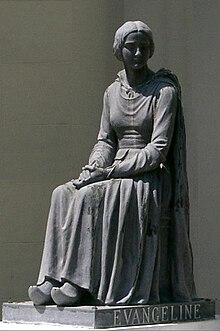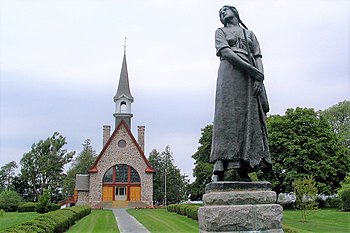
The Acadians are an ethnic group descended from the French who settled in the New France colony of Acadia during the 17th and 18th centuries. Most Acadians live in the Northern American region of Acadia, as it is the region where the descendants of a few Acadians who escaped the Expulsion of the Acadians re-settled. Most Acadians in Canada continue to live in majority French-speaking communities, notably those in New Brunswick where Acadians and Francophones are granted autonomy in areas such as education and health.
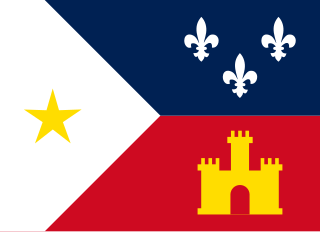
The Cajuns, also known as Louisiana Acadians, are a Louisiana French ethnicity mainly found in the U.S. state of Louisiana and surrounding Gulf Coast states.
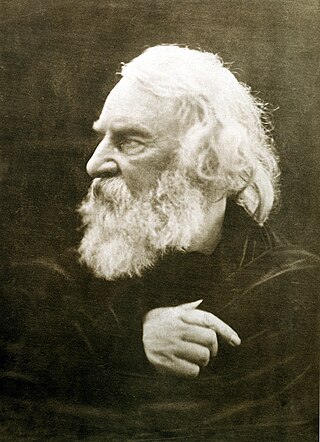
Henry Wadsworth Longfellow was an American poet and educator. His original works include the poems "Paul Revere's Ride", "The Song of Hiawatha", and "Evangeline". He was the first American to completely translate Dante Alighieri's Divine Comedy and was one of the fireside poets from New England.

Acadia was a colony of New France in northeastern North America which included parts of what are now the Maritime provinces, the Gaspé Peninsula and Maine to the Kennebec River. During much of the 17th and early 18th centuries, Norridgewock on the Kennebec River and Castine at the end of the Penobscot River were the southernmost settlements of Acadia. The French government defined the borders of Acadia as roughly between the 40th and 46th parallels on the Atlantic coast. It was eventually divided into British colonies. The population of Acadia included the various indigenous First Nations that comprised the Wabanaki Confederacy, the Acadian people and other French settlers.

The Expulsion of the Acadians is the term used for the forced removal between 1755 and 1764 by Britain of inhabitants of the North American region historically known as Acadia. It included the modern Canadian Maritime provinces of Nova Scotia, New Brunswick, and Prince Edward Island, along with the U.S. state of Maine. The Expulsion occurred during the French and Indian War, the North American theatre of the Seven Years' War.

The Courtship of Miles Standish is an 1858 narrative poem by American poet Henry Wadsworth Longfellow about the early days of Plymouth Colony, the colonial settlement established in America by the Mayflower Pilgrims.

Grand-Pré is a Canadian rural community in Kings County, Nova Scotia. Its French name translates to "Great/Large Meadow" and the community lies at the eastern edge of the Annapolis Valley several kilometres east of the town of Wolfville on a peninsula jutting into the Minas Basin surrounded by extensive dyked farm fields, framed by the Gaspereau and Cornwallis Rivers. The community was made famous by Henry Wadsworth Longfellow's poem Evangeline and is today home to the Grand-Pré National Historic Site. On June 30, 2012, the Landscape of Grand-Pré was named a World Heritage Site by UNESCO.

Grand-Pré National Historic Site is a park set aside to commemorate the Grand-Pré area of Nova Scotia as a centre of Acadian settlement from 1682 to 1755, and the British deportation of the Acadians that happened during the French and Indian War. The original village of Grand Pré extended four kilometres along the ridge between present-day Wolfville and Hortonville. Grand-Pré is listed as a World Heritage Site and is the main component of two National Historic Sites of Canada.
Evangeline is an 1847 epic poem by Henry Wadsworth Longfellow.
Joseph Broussard (1702–1765), also known as Beausoleil, was a leader of the Acadian people in Acadia; later Nova Scotia, Prince Edward Island, and New Brunswick. Broussard organized Mi'kmaq and Acadian militias against the British through King George's War, Father Le Loutre's War and during the Seven Years' War. After Acadia was captured by the British, he eventually led the first group of Acadians to southern Louisiana in the present-day United States. His name is sometimes presented as Joseph Gaurhept Broussard; this is likely the result of a transcription error. Broussard is widely regarded as a hero and an important historical figure by both Acadians and Cajuns.

The Acadians are the descendants of 17th and 18th century French settlers in parts of Acadia in the northeastern region of North America comprising what is now the Canadian Maritime Provinces of New Brunswick, Nova Scotia and Prince Edward Island, the Gaspé peninsula in eastern Québec, and the Kennebec River in southern Maine. The settlers whose descendants became Acadians primarily came from the southwestern and southern regions of France, historically known as Occitania, while some Acadians are claimed to be descended from the Indigenous peoples of the region. Today, due to assimilation, some Acadians may share other ethnic ancestries as well.
The Evangeline Trail is a scenic roadway in the Canadian province of Nova Scotia.

Evangeline is a musical with a book by Jamie Wax, lyrics by Wax and Paul Taranto, and music by Paul Taranto.
"Acadian Driftwood" is a song by the Band. It was the fourth track on their sixth studio album Northern Lights – Southern Cross (1975), written by member Robbie Robertson. Richard Manuel, Levon Helm and Rick Danko trade off lead vocals and harmonize on the chorus.

New Holland was a colony established by Dutch naval captain Jurriaen Aernoutsz upon seizing the capital of Acadia, Fort Pentagouet in Penobscot Bay, and several other Acadian villages during the Franco-Dutch War. The Dutch imprisoned the Governor of Acadia Jacques de Chambly. The French and native allies under the command of St. Castin regained control of the area the following year in 1675, however, a year later the Dutch West India Company appointed Cornelis Steenwijck, a Dutch merchant in New York, governor of the "coasts and countries of Nova Scotia and Acadie." The formal Dutch claim to Acadia (1676) was finally abandoned at the end of the war with the Treaty of Nijmegen in 1678.

Longfellow-Evangeline State Historic Site, located in St. Martinville, Louisiana, showcases the cultural significance of the Bayou Teche region. It is the oldest state park site in Louisiana, founded in 1934 as the Longfellow-Evangeline State Commemorative Area. Evangeline was Henry Wadsworth Longfellow's enormously popular 1847 epic poem about Acadian lovers, who are now figures in local history. In the town center, the Evangeline Oak is the legendary meeting place of the two lovers, Evangeline and Gabriel. A statue of Evangeline marks her supposed grave next to St. Martin of Tours Church. The state historic site commemorates the broader historical setting of the poem in the Acadian and Creole culture of this region of Louisiana.
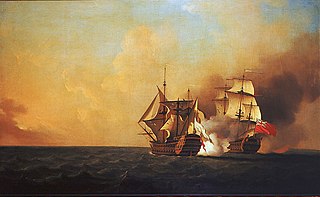
The Duc d'Anville expedition was sent from France to recapture Louisbourg and take peninsular Acadia. The expedition was the largest military force ever to set sail for the New World prior to the American Revolutionary War. This effort was the fourth and final French attempt to regain the Nova Scotian capital, Annapolis Royal, during King George's War. The Expedition was also supported on land by a force from Quebec under the command of Jean-Baptiste Nicolas Roch de Ramezay. Along with recapturing Acadia from the British, d'Anville was ordered to "consign Boston to flames, ravage New England and waste the British West Indies." News of the expedition spread fear throughout New York and New England.

Evangeline is a 1914 Canadian silent drama film directed by Edward P. Sullivan and William Cavanaugh and starring Laura Lyman and John F. Carleton. The screenplay was adapted from Henry Wadsworth Longfellow's 1847 poem Evangeline by Marguerite Marquis. It is the earliest recorded feature film in Canadian history.
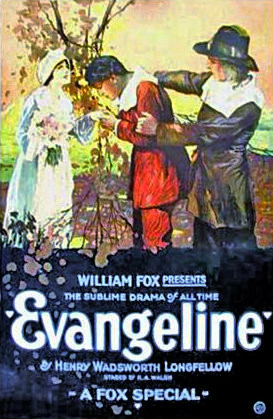
Evangeline is a lost 1919 American silent drama film produced and distributed by the Fox Film Corporation and directed by Raoul Walsh. The star of the film was Walsh's wife, who at the time was Miriam Cooper in the oft filmed story based on the 1847 poem of the same name by Henry Wadsworth Longfellow. The poem was filmed previously in 1908, 1911, and 1914.
Carrie Jenkins Harris was a 19th-century Canadian novelist who was born and lived in Nova Scotia.
